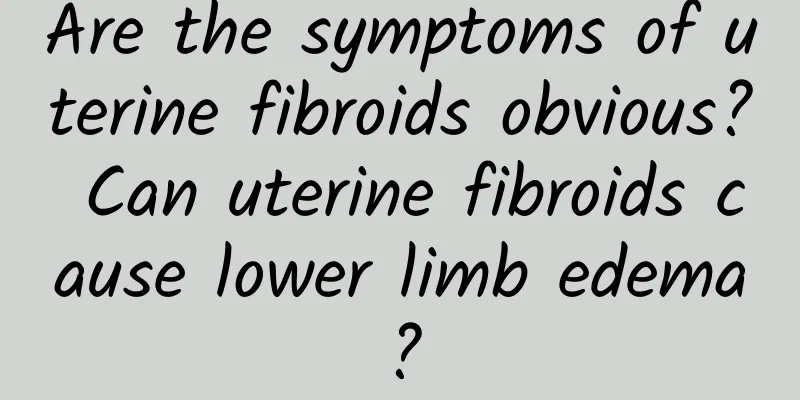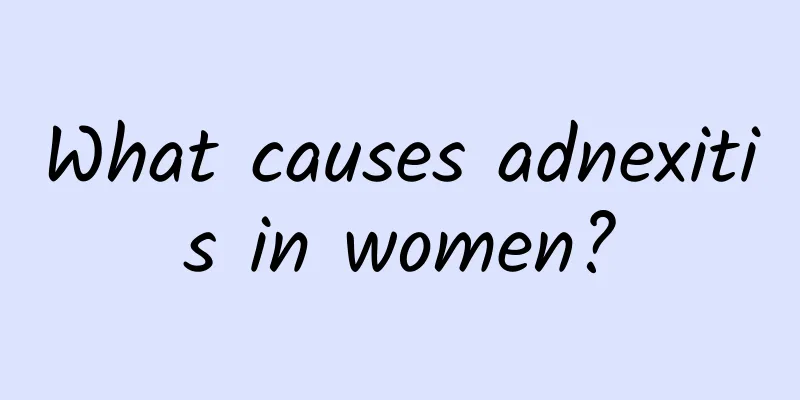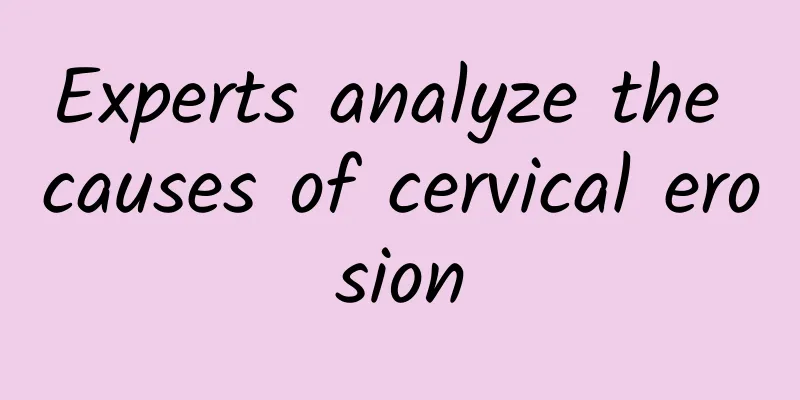Are the symptoms of uterine fibroids obvious? Can uterine fibroids cause lower limb edema?

|
Uterine fibroids are one of the most common benign tumors in the female reproductive organs and one of the most common tumors in the human body. They are also called fibroids and uterine fibroids. Because uterine fibroids are mainly composed of the proliferation of uterine smooth muscle cells and a small amount of fibrous connective tissue exists as supporting tissue, they are more accurately called uterine leiomyoma. Uterine fibroids. The following is a detailed introduction to uterine muscle symptoms: 1. Increased menstruation: It often occurs in submucosal and intramural fibroids, manifested as menorrhagia, prolonged menstruation or irregular vaginal bleeding. The main reasons for increased bleeding are: the increase in endometrial area, due to the estrogen effect of endometrial hyperplasia, fibroids hinder uterine contraction, affect blood circulation, and cause endometrial congestion. Due to long-term bleeding, patients often have varying degrees of anemia. 2. Pain: Relatively rare. In addition to pelvic nerve pressure pain, submucosal fibroids can cause uterine contraction and cause pain. When the fibroids block the cervical canal and hinder menstrual blood flow, it can cause dysmenorrhea. When the pedicle of a pedunculated subserosal fibroid is twisted or when the uterine fibroids become red or infected during pregnancy, it can cause severe abdominal pain. 3. Compression symptoms: Fibroids located in the lower part of the uterus and cervix, if embedded in the pelvic cavity, can compress pelvic tissues and nerves, causing lower abdominal pain and back pain. Fibroids growing forward or backward can compress the bladder, urethra or rectum, leading to frequent urination, dysuria, urinary retention or constipation. When fibroids grow on both sides, they form broad ligament fibroids, compressing the ureter or hydronephrosis. If they compress pelvic blood vessels and lymphatic vessels, they can cause lower limb edema. 4. Lower abdominal mass: When the subserosal or intramural fibroids grow larger than the pelvic cavity, the patient may touch the mass by himself and go to the hospital, which may be accompanied by a feeling of falling. 5. Impact on pregnancy and delivery: Subserosal fibroids generally do not affect pregnancy. When uterine horn intramural fibroids compress the interstitial part of the fallopian tube and submucosal fibroids cause endometrial infection and complicated endometrial hyperplasia, it can cause infertility. If you can get pregnant, sometimes insufficient blood supply or uterine stenosis will hinder fetal development, leading to miscarriage and premature birth. When the pregnancy is full-term, uterine deformation may also cause the fetus to be in an incorrect position, and fibroids may hinder uterine contraction, leading to dystocia and postpartum hemorrhage. The above are the symptoms of uterine fibroids. I hope patients can treat uterine fibroids in time. |
Recommend
What are the hazards of uterine fibroids? Who are the high-risk groups for uterine fibroids?
Understanding of uterine fibroid surgery: uterine...
Why are people getting fatter? Two hundred years ago, the French told you
Obesity is first determined by a person's nat...
How to tell if you have a chocolate cyst
Chocolate cyst is a kind of disease that people a...
Can I get pregnant with ovarian cysts?
Women with ovarian cystic endometriosis may face ...
Surgical treatment of hyperprolactinemia
If you suffer from hyperprolactinemia during preg...
Clinical nursing of hyperprolactinemia
Hyperprolactinemia, also known as hyperprolactine...
How to induce menstruation if menstruation is delayed? Learn how to induce menstruation
Female friends all know that the normal menstrual...
Which hospital is specialized in treating uterine fibroids?
Which hospital is professional in treating uterin...
How to avoid uterine fibroids
How to avoid the attack of uterine fibroids? The ...
Experts talk about the more common symptoms of adnexitis
Adnexitis is a comprehensive inflammation that ca...
What should I do if I have diarrhea after uterine fibroid surgery?
What should I do if I have diarrhea after uterine...
How to increase menstrual flow
If you want to increase your menstrual flow, you ...
The butterfly is so beautiful! 2 Yoga Tips to Balance Endocrine
Have you been feeling sleep depriv, menstrual irr...
Comparison of various surgical procedures for the treatment of multiple uterine fibroids
Surgery is a common method for treating multiple ...
What are the treatments for menopause?
We all know that people with menopause should go ...









